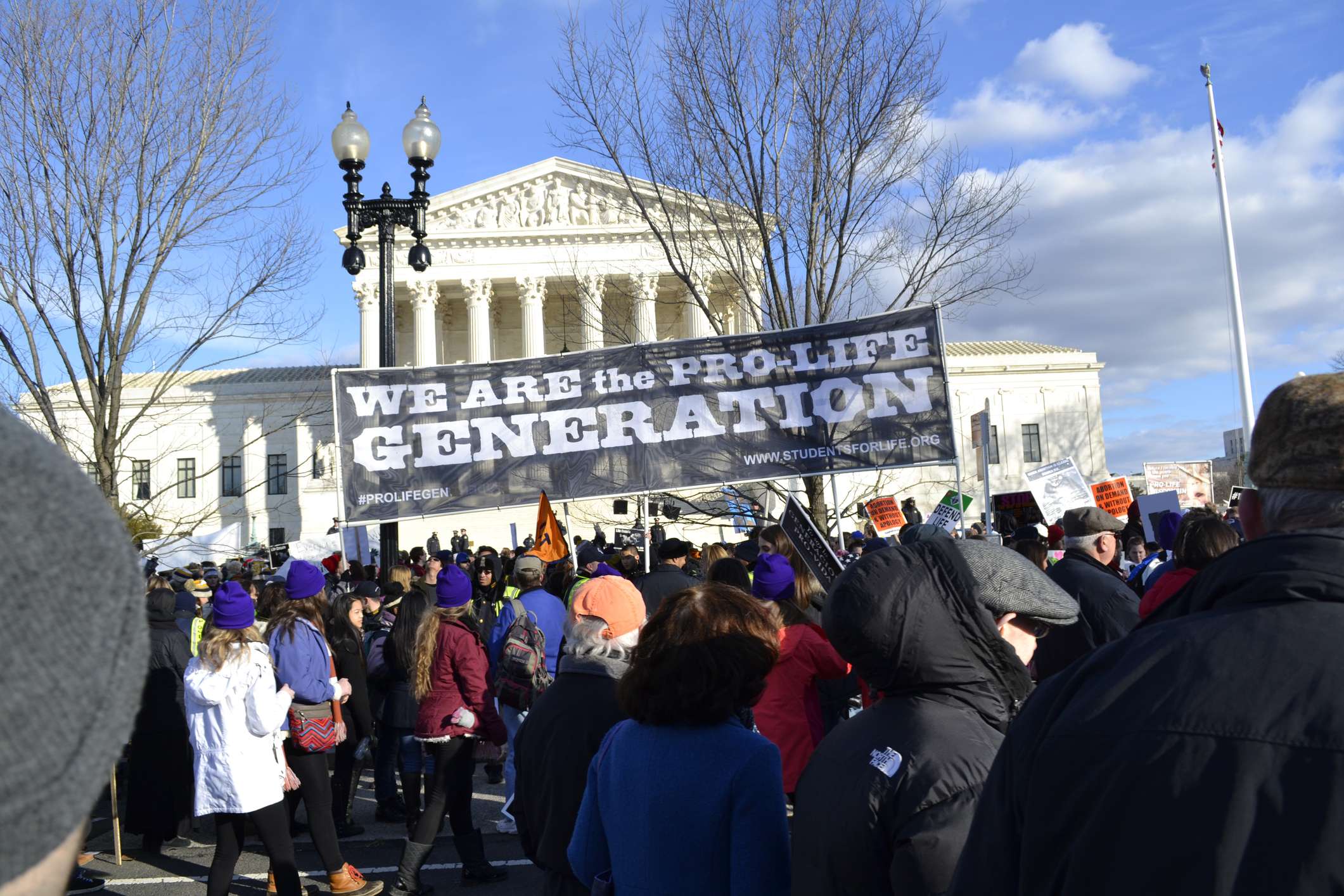
Societies often wrestle with solutions to the big questions to better create order in the chaos. Questions like:
“What is the meaning of life?”
”How does a nation protect its people?”
“What is a woman?”

The list goes on. Recently, a news article from Stat News focused on a study conducted by KFF, an independent health policy research publication, that found most people don’t know how to answer what an abortion is. According to the article:
“Abortion rights are positioned to be a major factor in the upcoming presidential election, the first since the Dobbs decision overturned Roe v. Wade and led to tighter abortion restrictions in several states. Three in 10 surveyed voters will only vote for a candidate who shares their views on abortion, the health policy research group KFF found last year.
Campo-Engelstein’s classroom is a microcosm of a major problem underlying the debate over who can access these procedures, for what reasons, and when: Across the country, there’s widespread disagreement — among doctors, lawmakers, and the public — about what an abortion is.”
This is a rather astonishing admission from an industry keen to keep performing abortions. It would be akin to building a home without knowing what the word “construction” means. It all seems fairly basic.
In truth, it actually is. It ultimately comes down to intent. And Students for Life of America (SFLA) can help define what abortion is – and maybe just as helpfully – what it isn’t, with intent in mind.
Abortion IS the intentional act of killing a preborn child:
Abortion can most simply be described as the intentional, deliberate act to terminate a preborn human life anywhere from after conception until the moment of birth, either through medical, chemical, or physical means.
This would make abortion the greatest human rights injustice of our time, given that human life begins at conception.
This is an undisputable, scientific reality. The American College of Pediatricians has said in no uncertain terms that: “human life begins at conception—fertilization. At fertilization, the human being emerges as a whole, genetically distinct, individuated zygotic living human organism, a member of the species Homo sapiens, needing only the proper environment in order to grow and develop.”

READ MORE ABOUT THE ABORTION INDUSTRY
Abortion is NOT spontaneous:
Since intent matters when it comes to what abortion is defined as, it’s worth also defining what abortion isn’t. And any unfortunate and unexpected loss of preborn life that is accidental or unintentional is NOT abortion: it’s a miscarriage.
“Spontaneous abortion” is one of several medical terms to describe what is more commonly known as a miscarriage. At face value, the two words that comprise the term “spontaneous abortion” appear completely at odds with one another. After all, spontaneous refers to something that is random and unexpected, yet an abortion is the deliberate and willful destruction of a preborn human being.
TO LEARN MORE ABOUT THE MYTHS ABOUT “SPONTANEOUS ABORTION,”
CLICK HERE
Abortion ISN’T rare – and it’s legal through all nine months in several US States:
Sadly, there’s no definitive way to know for sure how many abortions occur per year. Some states do not have reporting laws. And America does not have a National Abortion Reporting Law. “Safe, legal, and rare” gave way to “without restriction and without apology,” despite claims to the contrary.
According to data from the pro-choice Alan Guttmacher Institute:
- 930,160 reported abortions were committed in the U.S. in 2020.
- As of 2016, there are 186 abortions per 1,000 live births (about 1 in 5). This means for every five people, there is one missing because of abortion.
- 18% of pregnancies end in abortion.
- 46% of abortions are committed on women less than 25 years of age. That breaks down to 12% on adolescents, and 34% on women ages 20-24.
- Approximately 1/4 of American women have had an abortion by age 45.
- Abortion disproportionately affects black and Hispanic women. Black Americans make up 13% of the population yet obtain 38% of the abortions.
Meanwhile, Planned Parenthood says “(t)here’s no such thing as a ‘late-term abortion.’” Yet, that argument is nothing more than a myth. On one hand, the abortion industry will deny it happens, but on the other hand argue that it’s exceedingly rare. Or, they’ll claim abortion happens in cases of emergency when there is nothing in most laws requiring that.
According to other estimates from Guttmacher, about 12,000 abortions take place per year after viability.
Sadly, abortion is legal through all nine months in seven states, including Washington D.C. In almost half of U.S. states, abortion is allowed after 15 weeks, which is significant when you consider that the CDC reported that more than 9 in 10 abortions (93.1%) take place by three months of pregnancy (12 weeks).
READ: The New “Gotcha” Question: What is the Definition of Late or Later-Term Abortion?
Abortion IS NOT just surgical – it’s done alone by women via pills too:
When people conjure up the horrors of abortion, they probably think of suction abortion or dilation and curettage abortion. However, data from the Alan Guttmacher Institute showed that chemical abortion accounted for 54% of US abortions. This is largely because of how the Biden Administration abused their control of the FDA to set up No Test, Online Distribution of Chemical Abortion Pills. As a result, these pills are widespread, but they’re extremely dangerous.
The pills cause four times the complications as surgical abortion, with a risk of death that is ten times higher, according to a National Institute of Health Study.
Between 5 and 7 percent of women who take Chemical Abortion Pills will need a follow-up surgery to end the pregnancy. And an Australian study noted that up to 8 percent of women who took the pills in that country ended up in an emergency room. Similar math is even reported by the abortion industry.
Without proper treatment, women also face an extreme risk of infertility after using Chemical Abortion Pills if they have a Rh-negative blood type, which includes 15 percent of the population. When a pregnant, Rh-negative woman experiences blood contact, such as in birth or abortion, she must urgently receive a shot of Rh immunoglobulin to neutralize deadly antibodies. Without that, miscarriages can bring future heartache as a mother’s body attacks future pregnancy.
The burden falls upon the women. The model of Online, No Test Distribution of Chemical Abortion outsources all the risk of abortion complications to young women, as the abortion pill pushers can sell a few pills and walk away from what happens next.
LEARN MORE AT THIS IS CHEMICAL ABORTION.COM
Data from the Alan Guttmacher Institute showed that chemical abortion accounted for 54% of US abortions.
Chemical abortion (also known as RU-486, medical abortion, at-home abortion, self-managed abortion, and pill abortion) is the abortion of a baby typically in the first trimester using powerful drugs called Mifepristone and Misoprostol. This type of abortion makes up more than half of all abortions in the U.S. and has killed 24 women and injured thousands more since its legalization in 2000.

Abortion DOES NOT save lives:
The intent of abortion is death, while the intent of intervening when a mother is in danger is life. The bottom line is that when there’s a chance to save both mother and child, every effort should be taken to do so. Sometimes, that’s not always the case: medical emergencies do happen, such as in an ectopic pregnancy.
But that’s far removed from the key factor in abortion: intent.
According to a 2013 study, only 6% of women who had an abortion cited concern for their own health as the primary reason for seeking an abortion. The argument that abortion saves the life of the mother isn’t even supported by the statements of women choosing to seek an abortion in the first place.
Abortion DOES NOT fix rape:
A common abortion argument is that it fixes the damage caused by a rape – the intent behind this argument is that a child born of rape would create permanent and lasting victimhood for a woman that was impregnated by her rapist. The violence of abortion won’t erase the violence of rape. Instead, new pain and new problems emerge.
Society should reject discrimination and prejudice against children based on race, sex, age, perception of abilities, parental income, or the events of their conception. We reject shaming children for things beyond their control.
In all cases of rape:
- Safety comes first and love and supportive services second. The authorities must be active to protect the innocent.
- Resources, like those at Standing with You, must be provided.
- Abusers must be prosecuted. The events didn’t start with a pregnancy, but with a criminal act that must be addressed.
The preborn baby is innocent of the crime, and undeserving of the harsh sentence so many people support.
What’s more, many women who conceived because of rape choose to keep their babies.
The Elliot Institute surveyed 192 women who conceived during a rape or incest. Of those victims, 70% carried the baby to term and either raised the child or made an adoption plan, 29% had an abortion, and 1.5% had a miscarriage.
- 78% of those who aborted had regrets and said that abortion was the wrong solution.
- None of the women who gave birth said they regretted their decision.
Any person’s conception story is a beginning and should not be an end. Preborn babies don’t’ deserve second class citizenship or to be viewed as less than other human beings because of their origins.
Share this post
Recent Posts

National Celebrate Life Weekend Dominates D.C.: Just Look at the Coverage
01 Jul 2025
The Pro-Life Generation REACTS: “Big, Beautiful” Budget Bill Vote One Step Closer to Defunding Planned Parenthood & ALL Abortion Vendors
01 Jul 2025
News: FIVE Lawmakers Recognized for Defending Life
30 Jun 2025
